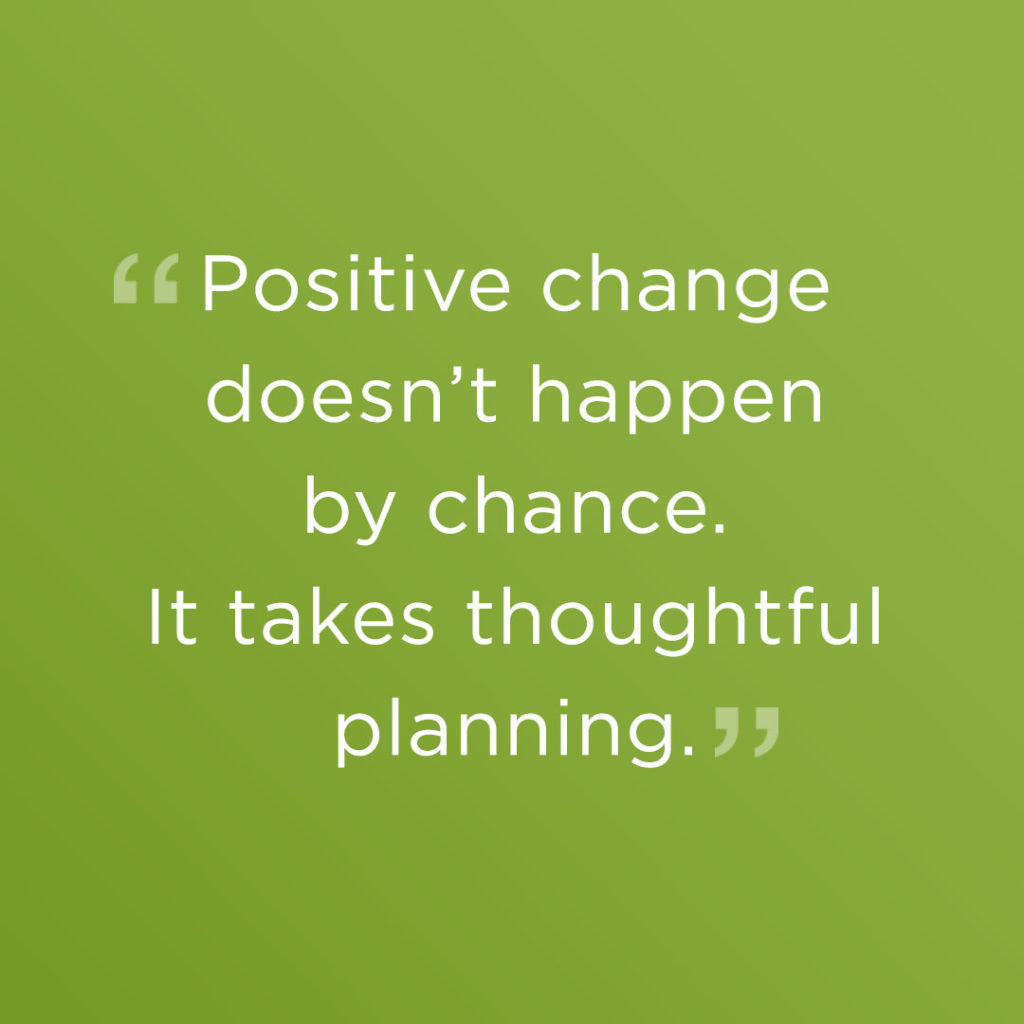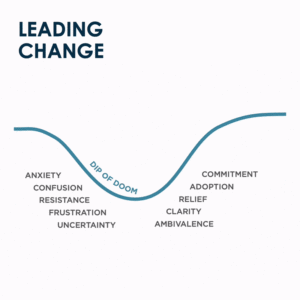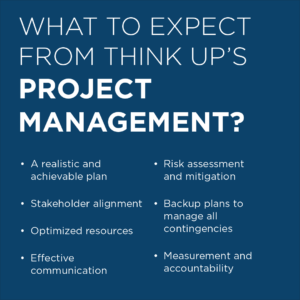For many, a new year signals new habits—an opportunity to refocus on personal goals with the intent to create a lasting impact. Yet resolutions are often abandoned just a few months (or weeks!) into the year. As many of us have learned, building habits is hard work! At Think Up, we’re experts on change management and creating behavior change—two things that can turn a New Year’s resolution into an accomplishment.
Here are four simple principles to help you take a more intentional, change-focused approach to your goals for the year.
DEFINE THE VISION
This may seem like a no-brainer. After all, we make resolutions because we have some sort of vision for a better version of ourselves. Resolutions shouldn’t be a loosely formed idea we figure out as we go (e.g., read more, get fit, eat better, etc.). We are more successful when we take the time to define what accomplishing our goals really looks like.
Your change vision should address the need for change, how it will impact you, and what success will look like. Once you have a clear understanding of what you want to accomplish and why, you’ll be more motivated to actually do it. For example, reading more just for the sake of reading may turn into: I want to read more because I recognize a need for more focused time to unwind.
Following are some questions that can help you shape your vision:
- Why do I need to change?
- Why does this matter to me?
- What are my objectives?
- How will I benefit from this change?
- What is my desired outcome?
- What will I need to do to be successful?
DEVELOP A PLAN
Positive change doesn’t happen by chance. It takes thoughtful planning. Assess where you are compared to where you want to be and determine the actions and steps that can help you cover the distance.
You may want to consider:
- What resources, tools, skills, etc., will I need to be successful?
- Will I need to consult an expert or third party to help (like a personal trainer)?
- What obstacles or potential roadblocks should I be aware of and prepare for?
- What routines, schedules, or priorities may need to shift to accomplish my goal?
IMPLEMENT THE CHANGE
Here’s the part where you put all your careful planning into practice! You may want to think of implementation as two things: practice and accountability.
Practice means you’ve built activities into your daily routine that support your change. This might even mean breaking your ultimate goal into smaller, more manageable goals. Accountability includes the mechanisms you put in place to make sure you’re on track:
- How are you measuring progress?
- At what frequency do you need to check in with yourself?
- Do you need to reevaluate and adjust course?
SUSTAIN THE CHANGE
In a dream world, change would look like a clean, straight line connecting the new behaviors you’ve implemented directly to your desired result—a smooth and painless transformation. But in reality, sustainment can be messy, littered with unforeseen challenges, failures, relapses, and obstacles. Sustaining change means we recognize and expect setbacks and challenges to occur, and when they do, we are prepared to deal with them.
To sustain your change:
- Don’t be discouraged by failure—learn from it and keep going
- Be adaptable, flexible, and forgiving
- Regroup, reassess (revisit the other principles of change), get back on track
Change is a journey and should be embraced as such. While these four principles are not a magic bullet for success, they can help you stay motivated, focused, and on track!



